Blowing everyone's minds worldwide on Aug. 29, 2018 is yet another Nas Daily video about Singapore:
Episode 871 is about Pulau Semakau, the only island landfill left in Singapore that has been hailed as an eco-miracle.
Incinerated waste is brought to this landfill to be buried.
And because of the care put into the design and operational work at the landfill, the site is clean, free of smell and scenic.
HDB tech: High speed waste disposal
However, there is more to the waste disposal methods Singapore has been developing than just waste incineration and burial.
Since 2015, the Pneumatic Waste Conveyance System (also known as PWCS) has been introduced to make waste disposal more convenient and less grimy.
Although the PWCS might sound like a fancy name, it is in fact a pretty sophisticated system.
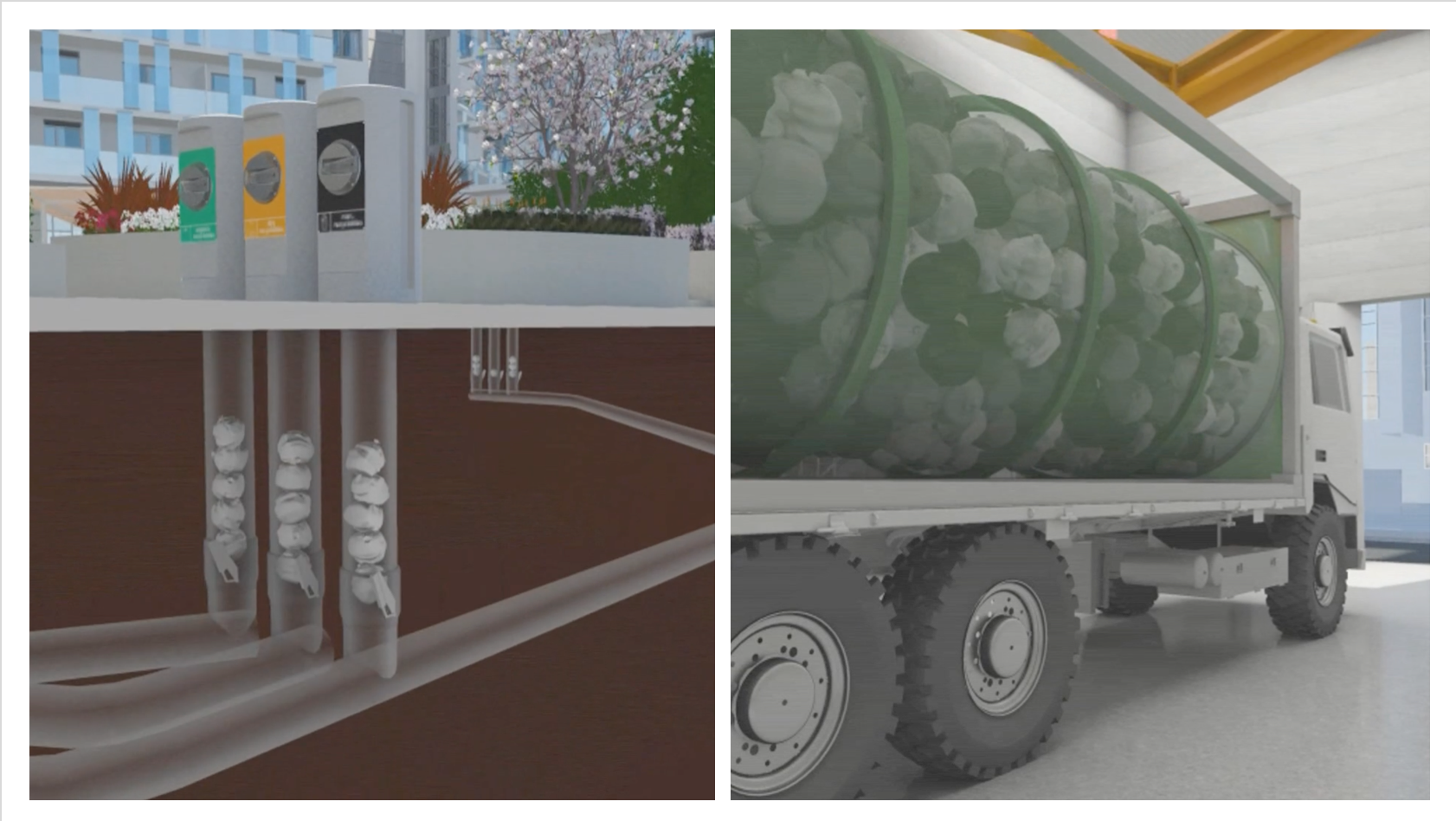
How new system works
This is how it works: Residents throw rubbish down their chute and it goes into a refuse chamber on the ground floor.
Instead of having cleaners collect the rubbish, a sensor is triggered when the container in the refuse chamber is full.
The waste is then transported by air through underground pipes at speeds of between 50kmh and 80kmh, to a central bin.
In the centralised bin, rubbish is stored in sealed containers and trucks will transport them to incineration plants when they are full.
Here is a nifty diagram of it:
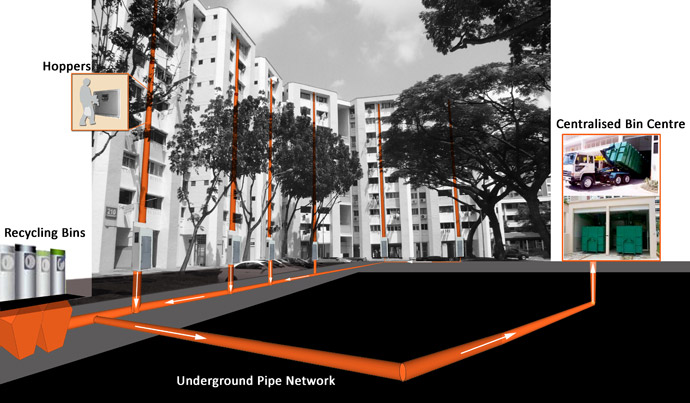 Photo from HDB.
Photo from HDB.
For this system to function effectively though, all waste thrown down the chute must be bagged, and large items such as carton boxes or long sticks are prohibited.
Benefits of the system
Because it is automated, this system reduces manpower needs by about 70 percent.
It is a fully-sealed system, reducing foul odours, the infestation of pests, and the need for cleaning up spillages at the chute.
The system also supports the separation of waste for recycling.
The future of our rubbish?
This system first started out in Yuhua in 2015.
Here's an artist's impression of the estate, with the top left image depicting the PWCS.
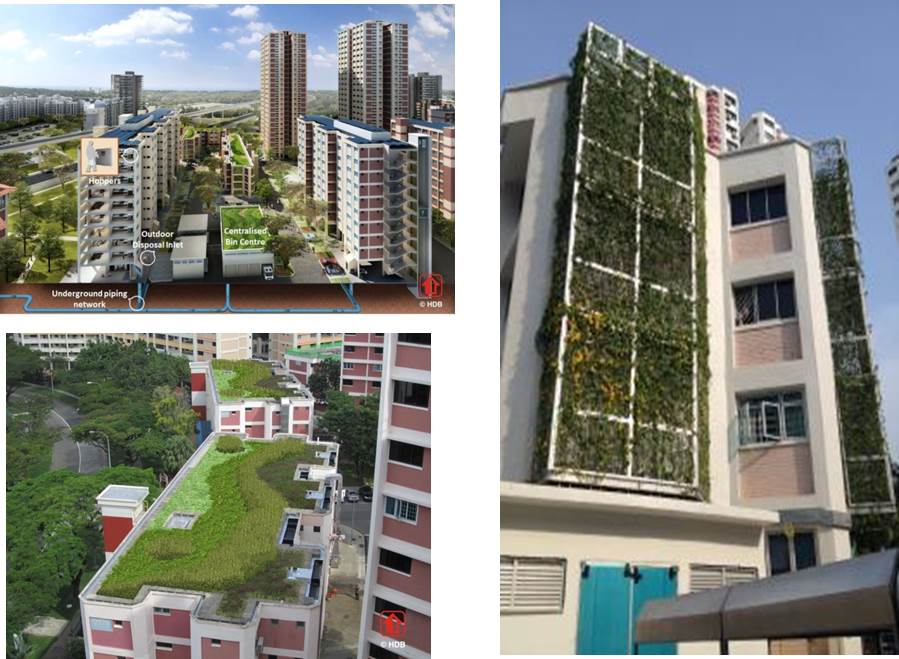 Photo from HDB.
Photo from HDB.
Presently, it has been installed in more than 100 condominiums, and will be in place in new HDB estates such as Tampines North and Bidadari.
Studies are also underway at the moment to explore the feasibility of implementing it at a district level.
Waste disposal in the past
The challenge of waste disposal is all too familiar a problem.
For HDB flats built before 1989, rubbish disposal chutes are installed within each flat, whereas newer flats have common rubbish chutes located at the common area on every floor.
Manual collection
The manual collection methods of waste are a familiar sight for Singaporeans, as it is a daily occurrence involving rubbish trucks and workers who empty the trash containers by hand.
Here are some pictures from 1973:
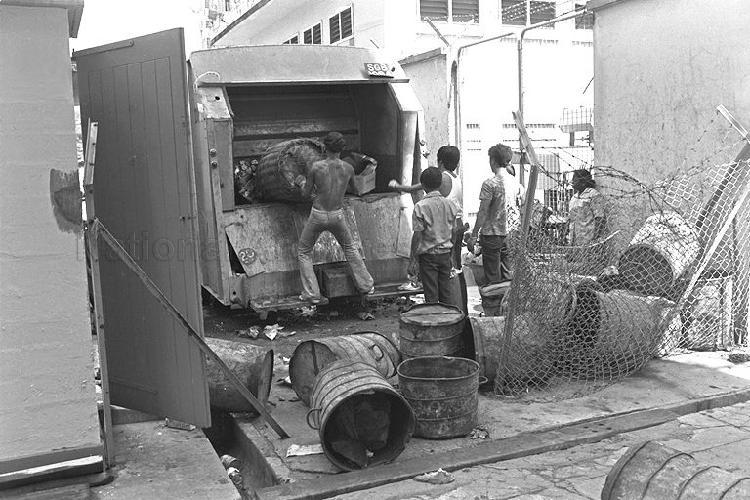 Photo from NAS.
Photo from NAS.
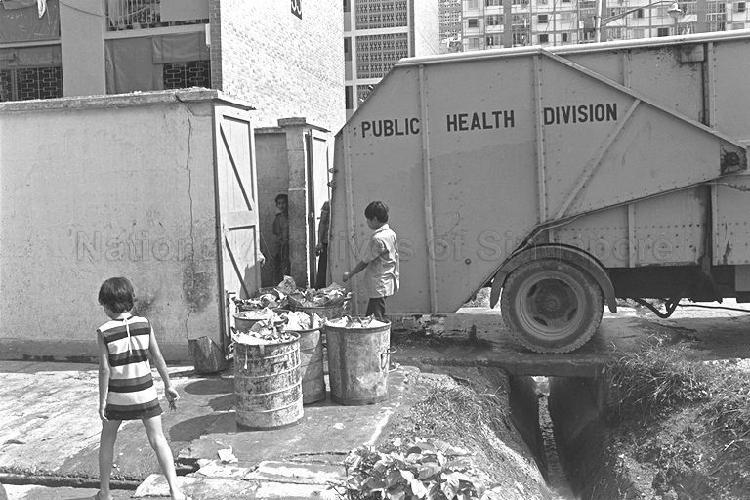 Photo from NAS.
Photo from NAS.
[related_story]
For HDB estates, when the trash goes down the chute, they are deposited into refuse bins on the ground floor.
This means the refuse bin from every block is manually emptied by cleaners and then transported to a bin centre.
This labour-intensive method is also known as the Individual Refuse Collection System (IRCS).
From time to time, this manual job gets even more laborious when irresponsible residents dispose of their rubbish with little regard for what happens immediately after it falls to the ground floor chute:
Top photo screngrabs from Envac video
If you like what you read, follow us on Facebook, Instagram, Twitter and Telegram to get the latest updates.
